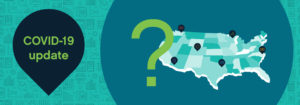‘Social determinants of health’ has been a common phrase for decades now, but the term social risk is much less popularized. So, what does it mean and is it all that different from SDOH? Most importantly, what should healthcare leaders understand about social risk? Read on to find out.
What is social risk?
Social risk describes an individual’s susceptibility to adverse social conditions that are directly tied to health outcomes. These conditions include housing instability, food insecurity, lack of transportation access, limited digital connectedness and low health literacy rates.
How is social risk different from social determinants of health?
Social determinants of health are the systems within which we all exist. These systems include social norms and powers, political and developmental agendas, and economic conditions and patterns. Social determinants of health are broad forces impacting everyone, while social risk is an interaction of specific individual factors.
How does understanding social risk benefit health systems and health plans?
Understanding social risk benefits health systems and health plans by offering critical insight into the severity and chronicity of social adversity that each individual is facing—and how that is shaping their health outcomes. Historically, payers and providers have not had visibility into this information.
Providers typically have patient records with very basic demographic data (e.g., name, date of birth, sex, race and/or ethnicity) and an inevitably incomplete medical history. If patients are insured, they also have member or beneficiary records where payers or government organizations store claims details and other coverage-related information. These patient and member/beneficiary records have typically acted as a Venn diagram with minimal overlap, as payers and providers have both been reluctant to share more information than they must.
When health plans and health systems are willing to embrace interoperability and incorporate social risk data, they can gain a 360-degree view of an individual’s wellbeing, strategically address unmet needs, and meaningfully impact health outcomes.
Why is social risk data extra salient for Medicare Advantage plans?
Social risk data can be even more powerful for Medicare Advantage plans, as they often have little to no insight into their beneficiaries’ claim history, morbidity risk, health behaviors, etc. Even in the absence of all that information, knowing an individual’s social risk can be enough to identify and stratify their needs, distribute situation-specific resources, and steer them to the right interventions for their unique profile. Demonstrating this level of investment in each individual’s health journey also helps Medicare Advantage plans build trust in the communities they serve and retain beneficiaries year over year.
Want to know more about social risk data, where to access it, and how to apply it? Watch the playback of Getting serious and specific about social risk, a webinar featuring Socially Determined’s James Beem (VP)and MedeAnalytics’ Brian Norris (VP and Managing Director, Strategic Consulting).
Get our take on industry trends
Avoid COVID-19 modeling pitfalls by eliminating bias, using good data
COVID-19 models are being used every day to predict the course and short- and long-term impacts of the pandemic. And we’ll be using these COVID-19 models for months to come.
Read on...Population Health Amid the Coronavirus Outbreak
In speaking with many colleagues throughout the provider and payer healthcare community, I’ve found an overwhelming sense of helplessness to the outbreak’s onslaught. This is exacerbated by the constant evolution of reported underlying medical conditions that indicate a higher risk of hospitalization or mortality for a coronavirus patient.
Read on...COVID-19 and the Financial Storm Ahead for Providers
Across the country, healthcare organizations are seeing 40%-80% declines in monthly charges with some of the most profitable services lines only seeing 20% of their normal monthly volumes during the pandemic.
Read on...3 Steps Any Healthcare Organization Can Take to Improve Enterprise Analytics
By Kristin Weir When it comes down to the most basic purpose of why organizations use analytics, it’s simple: they…
Read on...


